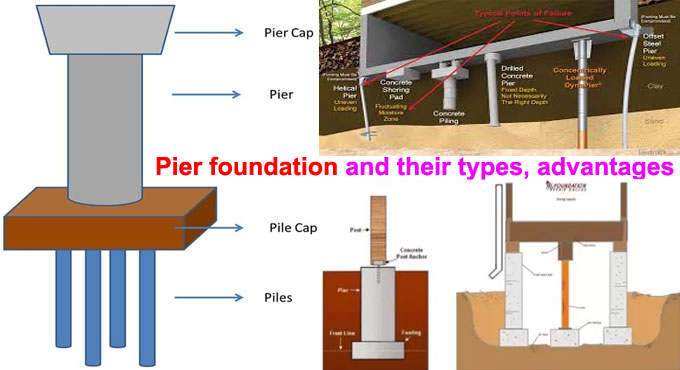A pier is kind of a big brother to a column. It is a support structure holding up great loads, and can take a lot of tensile strains as well. Piers are constructed in a dry place by digging out the soil in a large diameter hole and then filling it with reinforcements and concrete. A pile greater than 0.6 meter in diameter becomes a pier.
The pier foundation transfers the load on the pier to the ground via the bearing. It is generally a shallow structure placed on top of sound rock layer. Hard soil is also good for pier foundation construction provided they can take the load.
Types of Pier Foundation
There are two main types of pier foundations, namely:
1. Masonry or concrete pier
2. Drilled caisson
2. Drilled caisson
Which type of pier foundation will be used depends upon the depth of the hard bed, nature of soil, and the superimposed load.
Masonry or Concrete Pier Foundation
The name comes from the pier being made of concrete. Precast sections are manufactured in-situ or in facility. Then they are driven into the ground at location. The sections are generally reinforced with steel wires. At the bottom, a cast steel shoe is provided to hold the structure better and to transfer the load well. The cross sections of these piers are generally no more than 30-50 centimeters and they are no taller than 20 meters.
Drilled Caisson Pier Foundation
A drilled caisson is a large compressed member subjected to an axial load. The load is at the top and the reaction is at the bottom. These can be concrete caisson with enlarged bottom, a steel pipe caisson with concrete filled in it, or a concrete body caisson with a steel pipe core.

~~~~~~~~~~~~~~~~~~~~~~~~~~
Published By
Rajib Dey
www.constructioncost.co
~~~~~~~~~~~~~~~~~~~~~~~~~~
Published By
Rajib Dey
www.constructioncost.co
~~~~~~~~~~~~~~~~~~~~~~~~~~
No comments:
Post a Comment